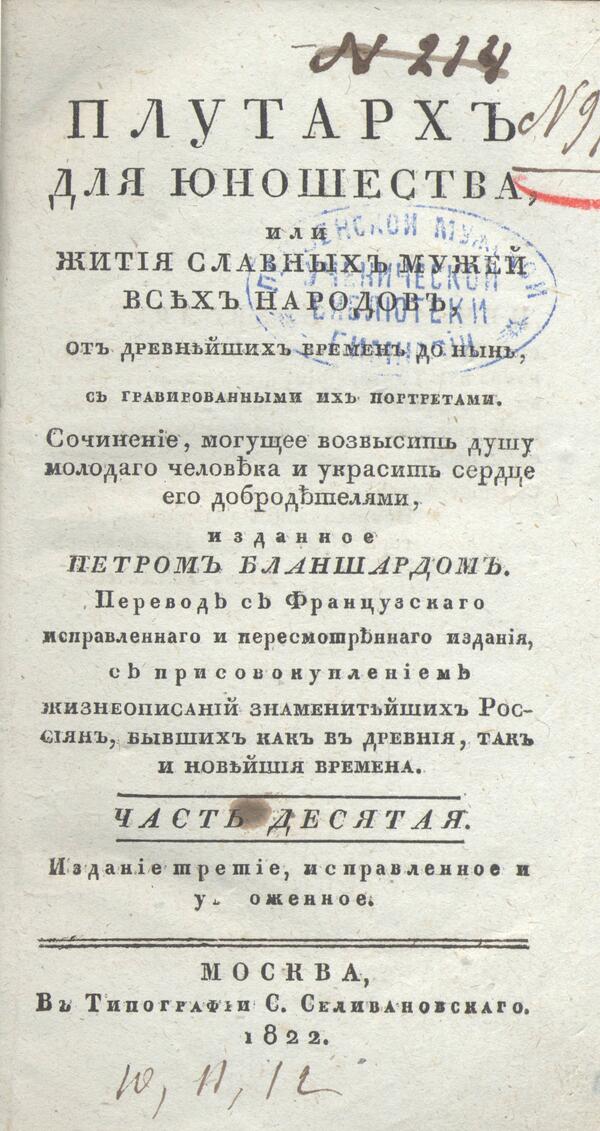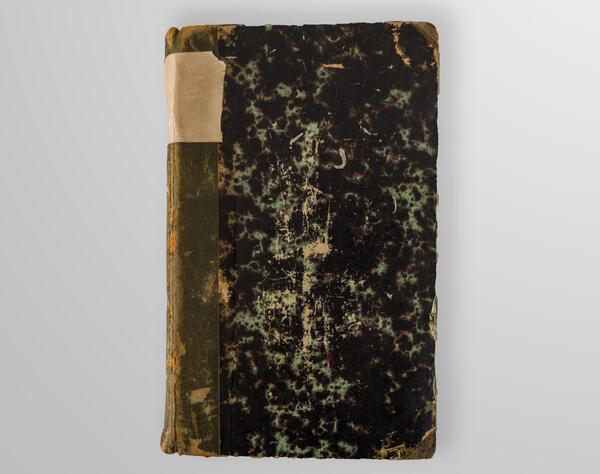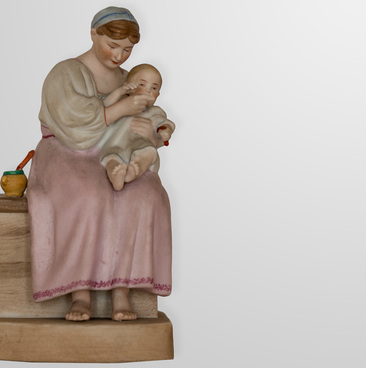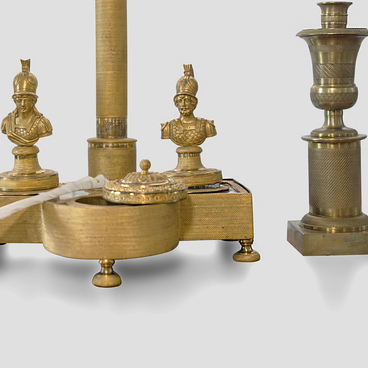“The Lives of the Glorious Men of All Nations…” is one of the few works by Plutarch that have survived to this day. At the turn of the 19th century, it was among the most popular books among readers of all ages and was translated into many languages. Its fragments were even included in special editions for children and illustrated albums.
Lucius Mestrius Plutarchus was born into a wealthy but not aristocratic family and grew up in Chaeronea. The young man received a good education and studied rhetoric, philosophy, mathematics, and classical works of Greek authors. He was acquainted with descendants of famous generals and statesmen and traveled extensively.
The displayed book “Plutarch for Youth” is a retelling of the ancient author’s writings by Pierre Blanchard (1772–1856) — a translator, illustrator, children’s writer, editor, and bookseller, better known in Russia as Pyotr Blanchard. Between 1808 and 1832, Blanchard worked in publishing and bookselling. Later, he founded the institute Elysée des Enfants.
The creative legacy of Pierre Blanchard includes over 270 works, which were published in more than 440 editions, including translations. Between 1802 and 1858, around thirty different works were published in the Russian Empire alone. “Plutarch for Youth”, the most famous of them, was released in 1808.
Over 15 years, the work was reprinted four times in eight, five, ten, and twelve parts, respectively. Starting with the second edition, the book included biographies of “famous Russians — both historical and contemporary personalities.”
The displayed book was published by one of the largest Moscow printing houses — the one that belonged to Semyon Selivanovsky.
At different times, it also published works by Nikolay Karamzin, Kondraty Ryleyev, Voltaire, John Milton, Walter Scott, and Dmitry Venevitinov.
The publisher set great store upon the design of
books, the choice of vignettes and fonts, including those imitating
handwriting. “The Lives of the Glorious Men…” are accompanied by copperplate
prints — medallions with portraits of prominent Russian historical
personalities. Special importance was also attached to the décor of the book
edge.






